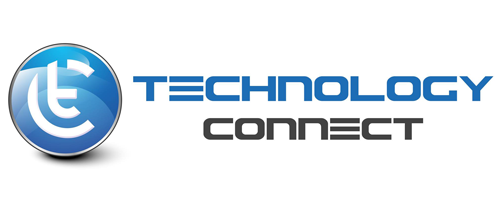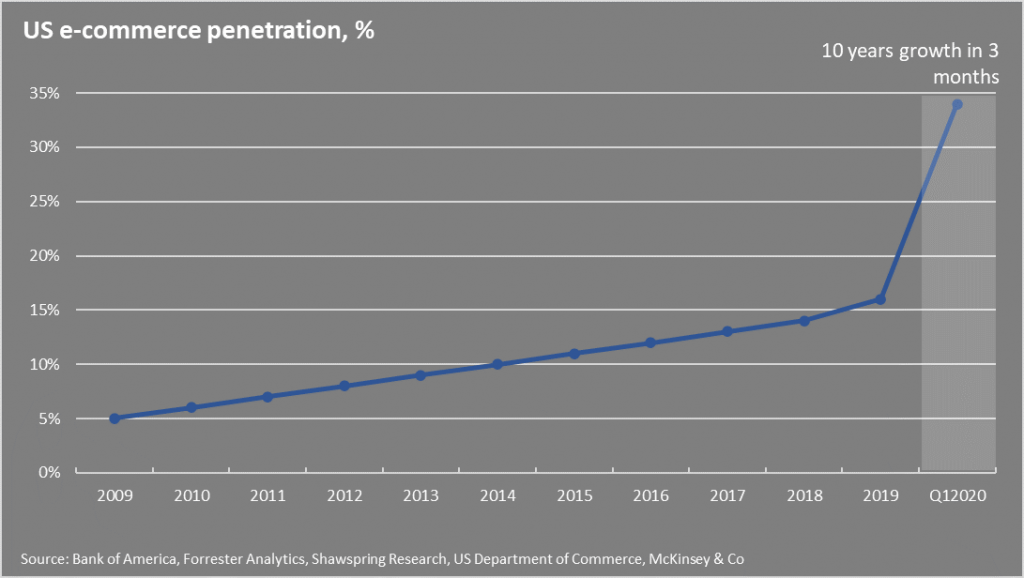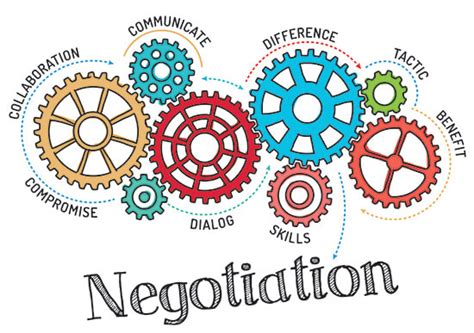

By Tom Dissing
At the June 2020 quarterly investor briefing, the CEO of Microsoft, Satya Nadella, commented that “We’ve seen two years’ worth of digital transformation in two months.” That may seem fast, but shortly thereafter, July 2020 e-commerce data for the United States shows that the pace of change is even faster. In fact – it’s exponential – with 10 years of growth experienced in just 3 months since the Covid-19 pandemic started to impact industries and companies world-wide.
Research by McKinsey shows that, 20% of consumers are now switching brand or store loyalty, primarily driven by concerns about safety and contactless buying. Twenty percent is a large share of the market up for grabs. How do companies avoid losing their customers and being left behind?
The answer is known. Companies need to create and ensure outstanding digital experiences and shifting to more digitised revenue streams. Companies know that Investments in digital solutions are critical and urgently required. But, with many companies simultaneously facing uncertain demand and therefore being hesitant about investing in new and emerging digital solutions, how do they navigate these difficult times to take advantage of the opportunities whilst also avoiding being left behind?
In such challenging times, technology procurement can perform a critical role in helping companies fast-track their digital transformation. However, this cannot be achieved through the traditional procurement approach. An agile mindset and an agile end-to-end procurement process must be applied. This includes using contracts that are set up to govern agile digital transformation. Many procurement leaders know that they need to improve in this area. Now is a great time to step up and help the company create a competitive advantage through better, faster and smarter technology procurement.
So, how can this be done – and fast, within risk tolerances? Technology Connect propose 3 actions:
1. Accelerated Cost Out. Procurement, IT and business stakeholders collaboratively work on identifying and executing an accelerated cost-out initiative. This should not take more than 2 weeks and cost savings must be realised within the next 12 months to effectively free-up capital for new digital investments. This can be done by a value-focused review of priority technology “change” and “run” contracts to identify quick wins and shortest time to maximum value. For example: by right-sizing cloud-based solutions to actual usage rather than enterprise capacity. Another approach is to use zero-based cost analysis and budgeting. The latter requires a shared executive commitment to differentiating capabilities, so that investment funding (budgets) can be allocated to these areas with most value to customers and where the company performs better than their competition.
2. Agile Procurement. Once funding has been made available for new technology investments, then Procurement must help business and IT stakeholders execute the contracts with technology suppliers within weeks. Traditional procurement processes will not be able to do this. They simply take too long. Agile procurement require business stakeholders to define product visions, outcomes and customer journeys. These are used to identify suitable suppliers for an accelerated market testing and contract negotiation. Importantly, if the new digital solutions require implementation services, then these must be undertaken using an agile methodology to ensure rapid and continuous delivery of digital product features and functionality that can make a difference to customer experience. This step might be a challenge for many procurement departments, but now is the time to change how things are done.
3. Supplier Collaboration. To optimise and continuously improve a company’s digital products, services and operating model, procurement can implement supplier advisory boards, or similar, to drive investments in new digital capabilities. Research by McKinsey shows that companies with advanced supplier collaboration capabilities tend to outperform their peers by 2x growth, 5% profitability (EBIT) and 10% lower costs. Leading companies use their supplier advisory boards to help manage risks and disruptive threats to the supplier ecosystem. As with Agile Procurement, implementing collaborative innovation and value-driving structures with suppliers require an agile mindset. Procurement is well placed to drive this but needs to move away from the traditional waterfall-style project mentality and slow bureaucratic processes.
In summary; with every business environment rapidly changing, driven by exponential change in customer behaviour and technology performance and capabilities, procurement can help turn technology supplier capabilities into a competitive advantage and thereby help their company avoid being left behind and instead out-pace the competition.
Tom Dissing is the founder and Managing Director of Technology Connect. He has deep expertise in helping companies digitally transform and scale their businesses through better, faster and smarter use of emerging technology and optimising value from ecosystems of supplier capabilities. Tom is a trusted advisor to procurement, technology and finance executives and senior management teams. He has advised senior executives in Financial Services (Banking, Insurance, Wealth and Superannuation), Media & Entertainment, Construction & Engineering, Technology Services and Government (Federal and State) in Australia, New Zealand, Asia and Europe.
If you found this post interesting, and would like regular updates on this and similar topics, you can follow me on Twitter (twitter.com/TomDissing), LinkedIn or simply log onto www.technologyconnect.com.au where you will find insightful articles about trending topics. Have a great day and stay connected!
Copyright © 2020 Technology Connect. All rights reserved.




